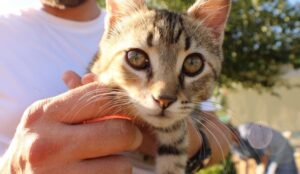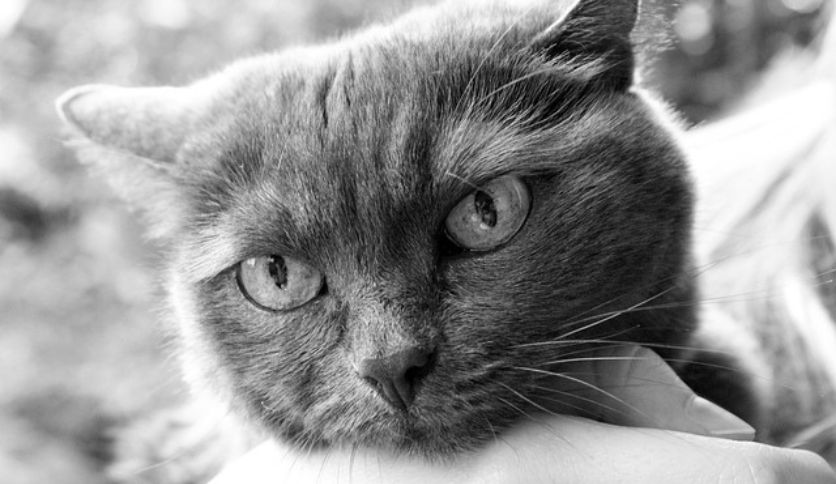Clumping cat litter forms solid clumps when it comes into contact with moisture, making it easy to scoop and clean, while non-clumping cat litter does not form clumps and requires more frequent changing. Choosing the right cat litter is important for both the comfort of your feline friend and the cleanliness of your home.
One of the primary decisions when selecting cat litter is whether to go for clumping or non-clumping options. Each type has advantages and disadvantages, and understanding the differences can help you make an informed choice. We will explore the key characteristics of clumping and non-clumping cat litter so you can choose which will effectively meet your cat’s needs and cleaning preferences.
Understanding Cat Litter Types
Cat litter comes in various types, with clumping and non-clumping being the two most commonly used options. Understanding the differences between these litter types can help cat owners make informed decisions for their furry friends.
Clumping litter forms solid clumps when it comes into contact with moisture. This is due to the presence of a substance called bentonite, which helps the litter bind together. The clumps can then be easily scooped out, keeping the litter box cleaner for longer.
Non-clumping litter, on the other hand, does not form clumps. It is usually made from materials such as clay, silica gel, or plant-based ingredients. Non-clumping litter absorbs urine, but the waste needs to be scooped out manually, while the litter itself can last longer without needing to be replaced entirely.
In addition to bentonite, other materials such as corn, recycled paper, sawdust, and crystal granules can be used in clumping and non-clumping cat litter. Depending on the litter’s intended benefits, these materials serve different purposes, including odor control, absorbency, and environmental friendliness.
With its ability to form solid clumps, clumping litter makes waste removal more accessible and efficient. Cat owners generally prefer it to minimize odor and reduce the frequency of complete litter box changes.
Although it doesn’t clump, non-clumping litter absorbs moisture effectively and is often a more cost-effective option. Some cats may prefer one type of litter over the other, so it’s essential to consider your cat’s needs and preferences when choosing the right litter.
Clumping Cat Litter: Pros And Cons

Clumping cat litter offers several benefits for cat owners. One of the main advantages is easy waste removal with clumping action. When your cat urinates, the litter forms tight clumps that can be easily scooped out, leaving the rest of the litter clean. This makes maintaining a clean litter box much simpler and less time-consuming.
Another consideration when choosing cat litter is tracking and dust. Clumping cat litter tends to produce less dust compared to non-clumping varieties. This can be particularly important for individuals with allergies or respiratory issues, as it reduces the amount of airborne particles.
Additionally, clumping cat litter often offers better scent control capabilities. The clumps help seal the odor, keeping your home smelling fresh.
Lastly, it is important to consider the impact on the environment. Some clumping cat litter is made from natural materials, making it biodegradable. However, choosing an environmentally friendly and safe disposal brand is important.
Non-Clumping Cat Litter Advantages
Nonclumping cat litter has several advantages over clumping cat litter. One advantage is the lower levels of dust it produces, making it ideal for cats with sensitive respiratory systems. The smaller particles and lack of clumping ingredients result in less dust being kicked up when the litter is used. This can help reduce potential respiratory issues for both cats and their owners.
Another advantage of nonclumping cat litter is that it is often more economical. Non-clumping litter tends to be less expensive than clumping litter, making it a cost-effective option for cat owners. Additionally, non-clumping cat litter offers simplicity and traditional use. It is straightforward to use and requires no special techniques or processes.
Assessing Your Cat’s Preferences
Observing your cat’s litter box behavior is crucial when deciding between clumping and non-clumping cat litter. Cats have unique preferences regarding their litter, and tailoring it to their needs ensures a happy and successful litter box experience.
Importance of Texture and Granule Size: Pay attention to your cat’s reaction to different litter textures and granule sizes. Some cats prefer a softer texture, while others may favor a coarser one. Observe how your cat moves within the litter box and whether they display any signs of discomfort or dissatisfaction.
Addressing Your Cat’s Sensitivity to Scents: Cats have a highly developed sense of smell, and certain scents may deter them from using the litter box. Opt for cat litter with no added fragrances, or choose one with a scent your cat approves of. Watch for any signs of aversion or avoidance, which may indicate a sensitivity to scented litter.
Health Considerations In Litter Choice
Choosing the right cat litter is crucial for your cat’s health. One important factor to consider is clumping versus non-clumping litter. Clumping litter allows for easy removal of urine, which can help monitor urinary health. With clumping litter, you can easily spot changes in urine color or consistency, which may indicate an underlying health issue.
On the other hand, non-clumping litter may not provide the same level of visibility, making it harder to detect potential health problems. Another consideration is the potential for allergens in different litter types. Certain litter materials, such as clay or scented varieties, can trigger cat allergies.
Opting for hypoallergenic or natural alternatives may help reduce the risk of allergic reactions. Choosing between clumping and non-clumping litter depends on your cat’s specific needs and preferences.
Maintenance And Cleaning
The frequency of changing cat litter depends on whether you use clumping or non-clumping litter. With clumping litter, the waste forms firm clumps that can be easily removed, allowing you to keep the litter box cleaner longer. Generally, it is recommended to scoop the clumps and solid waste 1-2 times a day and completely change the litter every 2-3 weeks.
On the other hand, non-clumping litter doesn’t clump the urine, which means you need to replace the entire litter more frequently. Removing solid waste daily and changing the litter every 5-7 days is advisable to prevent odor buildup and maintain freshness.
Suggested Cleaning Routines For Litter Longevity
To extend the life of your cat litter, consider the following cleaning routines:
- Scoop clumps and solid waste daily to clean the litter box and reduce odor.
- Add fresh litter as needed to maintain an appropriate depth.
- Regularly wash the litter box with mild soap and water to remove stuck-on residue.
- Allow the litter box to dry completely before adding fresh litter.
- Consider using litter box liners or mats to help with easy cleanup.
Managing Odor Control In Both Litter Types
To manage odor control in both clumping and non-clumping litter, try these tips:
- Choose a litter with odor-neutralizing properties.
- Add baking soda to the litter to absorb odors.
- Place the litter box in a well-ventilated area.
- Use an air freshener or deodorizer designed explicitly for cat odors.
- Regularly clean the litter box to prevent odor buildup.
Environmental And Sustainability Factors
When comparing clumping and non-clumping cat litter, one important factor to consider is their environmental impact and sustainability. Both types of litter can have different biodegradability levels, affecting their overall carbon pawprint.
Clumping cat litter typically contains ingredients such as bentonite clay or silica, which can take significant time to break down in landfills. On the other hand, non-clumping litter is often made from natural materials like wood, paper, or corn, which are more biodegradable.
Reducing the carbon pawprint of your cat’s litter might involve choosing environmentally responsible options. These can include eco-friendly cat litter made from sustainable resources, recycled materials, or even biodegradable alternatives. It’s important to read the labels and look for certifications like the Forest Stewardship Council’s (FSC) logo to ensure your litter is truly environmentally friendly.
Remember, small changes like opting for a more sustainable cat litter can contribute to a greener world for our feline friends and the environment.
Cost Analysis And Budget Considerations
A key factor to consider when choosing between clumping and non-clumping cat litter is the long-term cost implications. While clumping litter often comes with a higher upfront cost, it tends to last longer due to its ability to form compact clumps that are easy to remove. This can help reduce overall litter usage and extend the lifespan of each bag or box. On the other hand, non-clumping litter may be cheaper initially, but it can require more frequent complete replacements, resulting in higher ongoing expenses.
Compared to the upfront costs, non-clumping options are generally more affordable. However, it’s essential to find a balance between cost and convenience. Despite being more expensive, clumping litter provides benefits such as easier maintenance, reduced odor, and enhanced hygiene. Additionally, its ability to control moisture effectively can prevent the spread of bacteria and keep litter boxes cleaner for longer periods of time.
Choosing between clumping and non-clumping cat litter depends on individual preferences and budget. Considering the long-term cost implications, clumping litter may offer better value for money due to its longevity and added convenience.
The Verdict: Making An Informed Decision
When considering the choice between clumping and non-clumping cat litter, it’s crucial to weigh the pros and cons that align with your lifestyle. Clumping cat litter provides convenience as it forms easy-to-remove clumps when your cat urinates, simplifying the cleaning process. It can also help reduce odor, keeping your home smelling fresh for longer. However, some clumping litters contain chemicals that may harm your cat’s health. Non-clumping cat litter is safer and can be more cost-effective, absorbing liquids without forming clumps. Their natural ingredients make them less harmful to your cat if ingested accidentally.
Ultimately, consider your cat’s health and happiness when choosing a litter. Some cats may have preferences or sensitivities to certain types of litter, so it may require trial and error to find the right fit. Regular cleaning and maintenance are essential regardless of the type you choose to ensure a comfortable and hygienic environment for your furry friend.
In summary, both clumping and non-clumping cat litter have advantages and drawbacks. It’s essential to balance convenience, safety, and your cat’s needs to make the best choice for your household.
Frequently Asked Questions On Clumping Vs. Non-Clumping Cat Litter
Is Non-Clumping Or Clumping Litter Better?
Clumping litter is usually a better choice because it forms solid clumps, making it easier to scoop and maintain cleanliness. Non-clumping litter can be messier and requires more frequent complete scooping and changing of the litter box.
Why Shouldn’t I Use Clumping Cat Litter?
Clumping cat litter may not be recommended because it can cause cat health risks. When they groom, they may ingest the litter, which could lead to digestive issues. It may also cause respiratory problems when the litter dust is inhaled.
To ensure your cat’s well-being, consider using alternative litter options.
What Are The Disadvantages Of Non-clumping Cat Litter?
Non-clumping cat litter can be messy, as it doesn’t form solid clumps. It may require more frequent cleaning, leading to higher maintenance costs. Moreover, it may not control odors as effectively as clumping litter. Additionally, if your cat tends to dig or scratch, non-clumping litter can scatter more easily.
Do Vets Recommend Clumping Cat Litter?
Some vets recommend clumping cat litter because it helps control odors and makes clean-up easier. It also allows them to monitor their cat’s urine for health issues. However, some cats may have sensitivities to certain types of clumping litter, so it’s important to consult your vet to find the best option for your cat.
Conclusion
To sum it up, several factors come into play when deciding between clumping and non-clumping cat litter. The clumping variety offers convenience and easy cleanup, while the non-clumping kind minimizes tracking and dust. Ultimately, the choice depends on your cat’s preferences, cleaning routine, and specific health concerns.
Consider the pros and cons of each option before making a decision. Happy litter box shopping!

Hello, this is Frank Swanson, the owner, and operator of Pet Info Hut. I created this website as a way to share my love of pets with the world. I have over 7 years of experience working with animals, and I have a passion for helping people care for their pets. I hope that you find my website useful and informative. Thanks for visiting!

